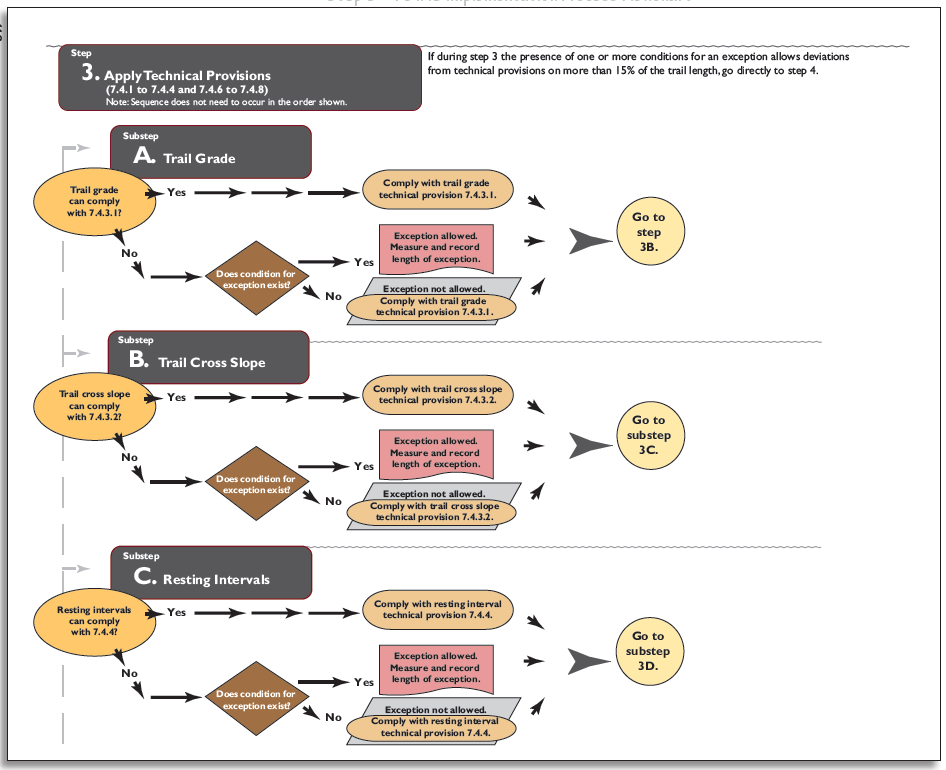Step 3: Apply the Accessibility Provisions
This step involves looking at FSTAG, sections 7.4.1 through 7.4.8, which contain the technical requirements for trail grade, cross slope, resting interval, surface, clear tread width, passing space, tread obstacles, protruding objects, and openings.
This summary and the process flowchart don't contain everything you need to know about trail design requirements. Refer to FSTAG for detailed instructions, definitions, conditions for an exception, accessibility provisions, and allowable deviations.
A series of questions with yes or no answers is asked for each of the technical requirements, similar to step 2. Use the trail running slope (grade) as an example.
First, look at the existing conditions on the ground and determine whether the trail alignment complies with the required running slopes of a maximum of 1:20 (5 percent) for any distance, 1:12 (8.33 percent) for up to 200 feet (61 meters), 1:10 (10 percent) for up to 30 feet (9 meters), and so forth. Could a change in trail alignment facilitate meeting the requirement? If not, does one of the conditions for an exception prevent compliance? If the trail alignment complies with the required slope or there is no condition for an exception, compliance with the technical requirement for trail grade is required. If the grade requirement can't be met because of a condition for an exception, measure and record the length of trail that will deviate from the technical requirement. Then consider how the running slope could be adjusted to get as close as practicable to the requirement. Record what the slope will be on that section of the trail and proceed to the next technical requirement.
Each technical requirement is addressed in a similar manner. Make a determination for every technical requirement: either compliance is required or deviations are permitted. Be sure to measure and record the length of the trail on which each deviation from a particular technical requirement will occur. Figure 144 shows step 3. After you work through all the technical requirements, proceed to the last step.

Figure 144—Step 3 of the Forest Service Trail Accessibility Guidelines implementation process. (For a larger image please click here.)
If at any point during step 3 you find that the recorded length of the trail that contains deviations adds up to 15 percent or more of the total trail length, proceed directly to step 4.

User Comments/Questions
Add Comment/Question